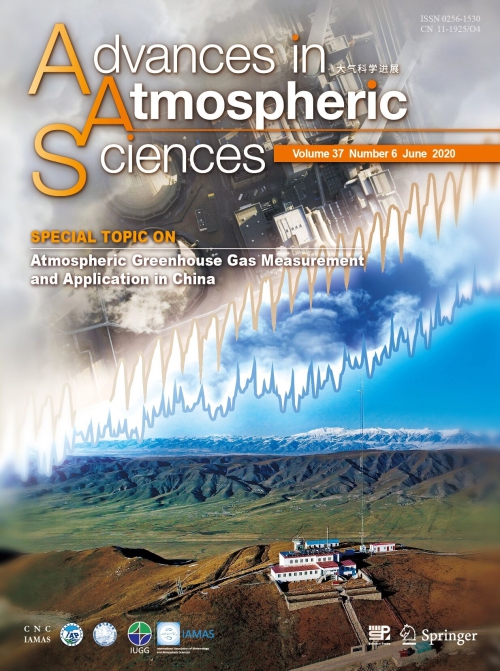A New Look into the Sources and Impacts of Greenhouse Gases in China
Date:2020-05-18
China's implementation of a national carbon trading market to reduce greenhouse gas (GHG) emissions requires reliable and timely information on GHG sources and impacts. Recent GHG monitoring and modeling studies provide new GHG emission estimates to help policymakers guide progress toward emission reductions.
"Atmospheric Greenhouse Gas Measurement and Application in China," a joint special issue of three journals—Advances in Atmospheric Sciences (AAS), Atmospheric and Ocean Science Letters, and Advances in Climate Change Research— details the latest observations and findings presented by researchers at the First China Greenhouse Gas Monitoring Conference, held in Beijing between May 30 to 31 in 2019.
Reporting on carbon dioxide distribution in Xi’an City, ozone flux over a maize field, hydrofluorocarbon emissions in the Yangtze river delta and stratosphere-troposphere exchanges of carbon dioxide and carbon monoxide above China, these and other studies presented in this comprehensive AAS issue reflect China’s improved atmospheric GHG measurement techniques.
"As a nation heavily impacted by climate change, China has implemented many actions to respond to this global challenge," said HAN Pengfei, State Key Laboratory of Numerical Modelling for Atmospheric Sciences and Geophysical Fluid Dynamics of Institute of Atmospheric Physics at Chinese Academy of Sciences. HAN is one of the organizers of the joint special issue. "These efforts provide scientific understanding, technical support and solutions for major issues such as energy conservation and emissions reduction, carbon market transactions and low-carbon development."

Greenhouse gas emissions (top) in cities can be detected in remote areas (bottom). The cover art design for the bottom figure is reproduced from a photo taken by Mr. LIU Peng showing the China Global Atmosphere Watch Baseline Observatory (CGAWBO) at Mt. Waliguan, Qinghai Province. (Image by AAS)
Highlights from the issue cover all of the 2019 conference topics:
CO2 background monitoring. Mai et al. measured background atmospheric CO2 and potential regional sources in the Pearl River Delta region.
CO2 city area (emission sources) monitoring. Xiong et al. report on CO2 spatial distribution in Xi'an City using carbon-14 data. Bao et al. used a low-cost, non-dispersive infrared sensor to observe vertical CO2 distribution in Shijiazhuang. Zhang et al. analyzed CO2 variation and transmission in Taiyuan.
Non-CO2 GHG monitoring. Pu et al. estimated 2012–2016 hydrofluorocarbon emissions in the Yangtze River Delta region.
GHG flux measurement. Zhu et al. compared ozone flux above a maize field using gradient and eddy covariance methods.
New technologies and applications for GHG measurement. Ji et al. document methane distribution in Xianghe derived from ground-based measurements. Yi et al. used the National Oceanic and Atmospheric Administration’s AirCore method to directly observe atmospheric transport and stratosphere–troposphere exchange based on CO2 profile measurements in Inner Mongolia.
Applications of observational data. Fu et al. studied the sensitivity of simulated CO2 concentrations to interannual variations over East Asia.
Along with this special issue, the China Carbon Monitoring Alliance (http://cma.sense1.cn ) has started, while a data resources platform was established to provide opportunities for collaborations.
Media contact: Ms. LIN Zheng, jennylin@mail.iap.ac.cn
